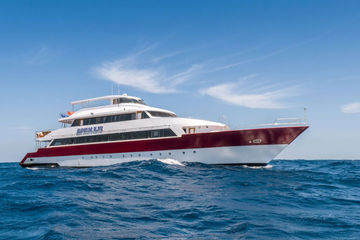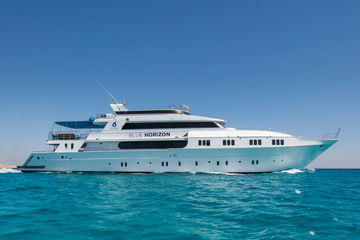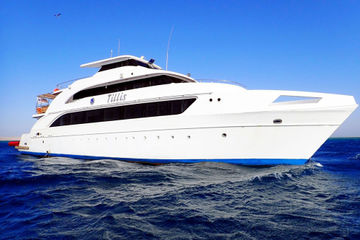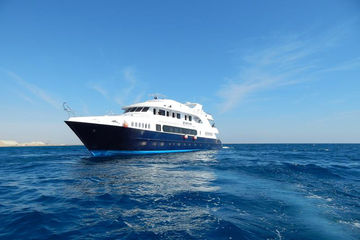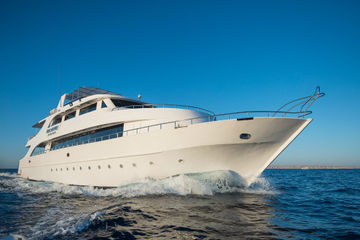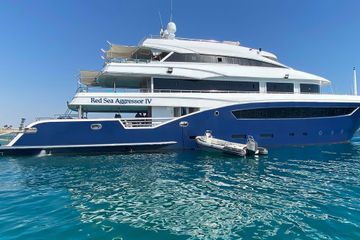Scuba diving in St. Johns
Scuba diving in St. Johns
Scuba diving in St Johns reef, is one of the most spectacular experiences for divers visiting Egypt. The reef sits in Foul Bay which despite the ominous name, is one of the most beautiful natural areas of Egypt. The Egyptian National Park protects the area as part of the Elba National Park, so you can be certain of abundant marine life when you are diving in St Johns reef and the surrounding area. St. Johns reef covers an area of 290 km sq. with a great deal of diversity in the dive sites around it. With everything from stunning caverns to huge open reefs with sharks and mantas, St Johns scuba diving is an iconic Red Sea dive area and sure to take even the most experienced diver’s breath away.
What is popularly known as St. Johns reef, is in fact several reefs that sit around the island of St John. To the east there are plateaus and deep drop-offs for spotting pelagics and closer into the shore there are more laid back sites with flat bottoms and lighter currents. There are also several caves to explore while you are scuba diving in St Johns reef and caverns which make perfect photography subjects. In a sea full of amazing dive sites, St Johns scuba diving is special for the sheer diversity of the dive tours here.
44 Liveaboards in St. JohnsExplore all liveaboards
Marine Life in St Johns
Diving in St Johns isn’t just diverse, there is also a definite wow factor when it come to the marine life. There are plenty of sharks on the reefs, such as grey and white tip reef sharks. You can also see bigger sharks when you are scuba diving at St Johns. Curious oceanic whitetips come to check you out and there are hammerheads out in the blue. Manta can also be seen at some of the plateau dive sites and if you are lucky you might even have a visit from one of the dolphin pods that hunt in the area.
It is not all just big fish when you are diving at St Johns though, there are huge reefs sprawling out close to the island. These reefs are full of hard and soft corals in every colour you can think of and home to a huge number of reef fish. Although in Egypt scuba diving is not particularly well known for critter diving, St Johns is lucky to have a lot of smaller life with plentiful anemone and nudibranchs. There are also lots of eels, cuttlefish and squid to be found all over the island’s dive sites.
Best Dive Sites in St Johns
One of the best dive sites in St Johns, Habili Ali is a top dive spot for pelagics such as mantas, oceanic whitetips and hammerheads. The steep reef wall is a natural passing place and there are many corals growing on the reef and many reef fish living here too. There is also a chance that a dolphin pod might pop by the reef hunting for food.
It is possible to make three or four dives per day at Abu Basala reef as this is one of the largest reefs in the area. The reef is also flat and fairly shallow so it is perfect for less experienced divers. Dangerous reef, despite its ominous name is also a perfect dive spot for novice divers and those who want to learn to dive in St Johns. It enjoys a sandy flat bottom and shallow waters without much current. There is abundant life including many eels and squid, making it ideal for doing a night dive on your dive trip.
Best Time to Dive in St Johns
Like most Red Sea scuba diving, St Johns is fantastic all year round and because of its southerly position there is less of a drop in temperature in the winter months. As in other areas in Egypt when to go depends on what you would like to see. Manta season in St. Johns is in the summer when the plankton blooms bring these fascinating creatures close to the reefs. It is also worth noting that the price for diving in St. Johns can vary depending on the season as well.
Experience Level for Diving in St Johns
Thanks to the size and variety of the area around the island, diving at St Johns is open to divers of all levels. There are excellent shallow dive sites for beginners and many people chose to learn to dive at St Johns. For more advanced divers there are the steep walls and plateaus where you will be diving in current with the big pelagic fish as well.
How Do I Get to St Johns
Getting to St Johns is fairly easy from the resort of Marsa Alam which has its own international airport. From Port Ghalib nearby, there are numerous Egypt liveaboards that depart to take you scuba diving in St Johns, with approximately a 14-hour sail from the port to the dive sites a liveaboard is a perfect way to visit St. Johns
